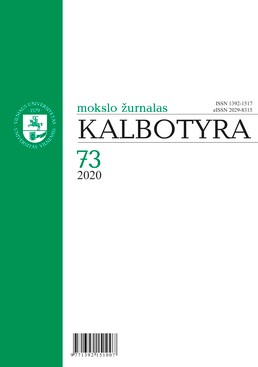Emotion or Reason? Heart as a Container in English and Lithuanian
Emotion or Reason? Heart as a Container in English and Lithuanian
Author(s): Inesa ŠeškauskienėSubject(s): Theoretical Linguistics, Lexis, Semantics, Comparative Linguistics, Cognitive linguistics, Baltic Languages
Published by: Vilniaus Universiteto Leidykla
Keywords: metaphor; emotions; container image schema; English; Lithuanian;
Summary/Abstract: Body part lexemes are among the most frequently metaphorised lexemes across languages and cultures. Heart is often conceptualised as a container for feelings and emotions, especially in Western languages and cultures. The paper sets out to examine a typical construction signalling the image schema of heart as a container: in the/my/his/ her heart in English and šird-yje (heart-loc.sg) in Lithuanian to determine the relevance of the image schema for the semantics of the above construction, especially in reference to emotions and feelings. Also types of containers in each language are identified. The investigation is based on corpus data and the key principles of metaphor identification procedure. The results demonstrate that the construction is mostly used metaphorically in both languages and the container image schema is paramount in interpreting the semantics of the construction. It is employed in at least three senses: container for emotions and feelings, centrality and hiding. However, the distribution of the senses in the two languages is quite different with Lithuanian showing more adherence to the metaphor of a container for emotions and feelings and English giving preference to heart as centre of activity and attraction.
Journal: Kalbotyra
- Issue Year: 2020
- Issue No: 73
- Page Range: 132-149
- Page Count: 18
- Language: English

